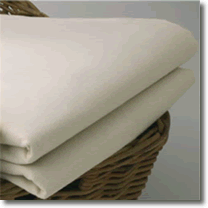As a bedding manufacturer, cotton is the life blood of what we do. We are located in Lancashire, a place that once had a thriving cotton industry. Indeed, around 100 years ago it was the pride of the U.K creating fabric from yarn and creating products that were exported around the world. Unfortunately the industry today, while still significant, is a lot smaller with only a few manufacturers remaining to carry on workmanship and manufacture in the textile sector.
So, what happened to the UK Cotton Industry?

Prior to the mid 1700s, textile production in the United Kingdom was performed by handloom weavers. In these early years production was typically linen and wool but would be followed later by cotton. The industry began to truly evolve with the advent of the Industrial Revolution and the development of the power loom, patented by Edmund Cartwright in 1785. The power loom was a mechanized loom which used water to power instead of by hand and sped up the weaving process significantly. The idea was further developed over the coming years using steam power until fully automatic looms were in use by the mid 1800’s.
It was quickly discovered that Lancashire was the ideal location for the expanding cotton industry; already providing expert weavers as well an abundant supply of coal for steam engines, stone for building factories, and the ideal climate for processing cotton – cool and damp! The region’s population boomed as the cotton industry exploded in the United Kingdom. Raw cotton, imported from the Americas, grew the industry and created a British monopoly on textile exports to the Americas and Africa, all of which fueled the slave trade as well as industrial growth in Britain.
After slavery was outlawed, the industry continued to grow and by 1912, at the cotton industry’s peak, eight billion yards of cotton were produced. The outbreak of World War I, meant the end of exports to foreign countries like Japan, who built their own factories and produced a less expensive product as well. As the war ended, Gandhi’s call for a boycott of British goods, including cotton, followed by Japan’s emergence as the world’s largest cotton manufacturer, caused a large number of Britain’s mills to close.
A small resurgence of the industry came with the dawn of World War II, as cotton manufacturers were called on to support the war effort with fabric for uniforms and parachutes. Following the war, the Cotton Industry in the United Kingdom, unable to compete with mounting international competition began to fail. The growth of cheap manufacturing abroad and the move away from manufacture during the late 70’s – 1980’s saw further closures as the cotton mills struggled to compete.
Today, little remains of our legacy from the U.K.’s golden age of Cotton Industry but there is still a strong legacy of seamstresses working in many facets of the textile industry. From apparel and shoe manufacture to our own UK manufactured bed linen, there are businesses carrying on the proud tradition of that legacy.
For more information on life in a cotton mill, see the imperial war museums articles here
I hope you enjoyed reading our pocket history, if you think we’ve missed anything or want to add your views, please let us know in the comments below.




